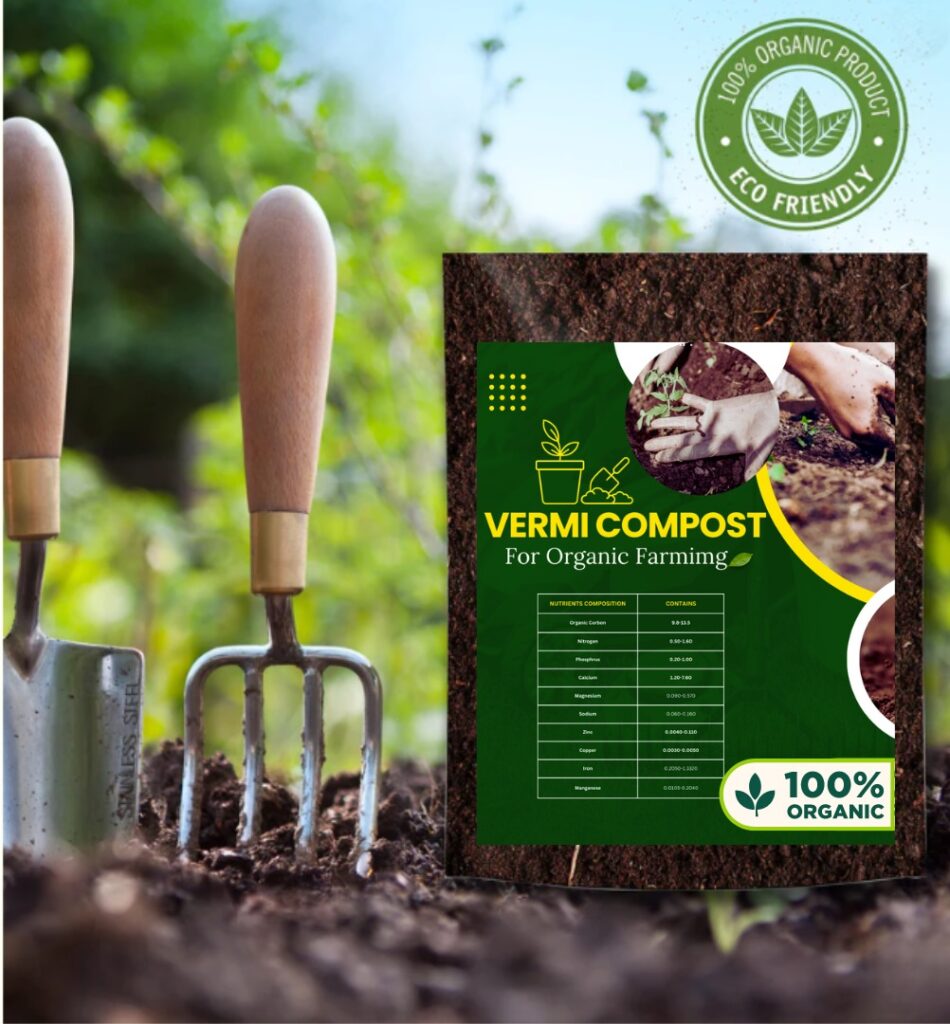What is vermicompost for plants?
The compost made by vermicomposting i.e. using earthworms to breakdown organic waste, is called vermicompost for plants. The earthworms consume the organic waste and those are broken down in their digestive tract by chemicals to produce vermicast which is rich in minerals.

The advantages of using vermicompost of plants are:
- Creates nutritionally rich foundations for the plants.
- Improves the quality of the soil.
- The water resistance capacity of soil is increased.
- Enhances germination of the seedlings.
- Helps in plant development, and harvest yield.
- Supports soil with plant development chemicals like auxins, gibberellic corrosive, and so forth.
The steps of production of vermicompost :
Materials Required –Water, Earthworms, Cow dung, Soil or Sand, weed biomass, plastic tank or cemented pit, Dry straw and leaves collected from paddy fields, Biodegradable wastes, Thatch Roof.
Procedure to make vermicompost :
- A plastic or concrete container is used to make compost. The availability of raw materials plays an important role in selection of the size of the tank.
- The biomass is collected and place under the sun for about 9-11 days.
- Then it is chopped into the desired size with a knife or cutter.
- The cow dung slurry is prepared and spread on the pile for quick decomposition.
- A layer (2-3 inches) of soil or sand is added to the bottom of the container.
- Then a fine bed of partially decomposed cow dung, dried leaves and other biodegradable wastes collected from the field and kitchen is made and spread evenly on a layer of sand.
- Chopped bio-waste and partially decomposed cow manure is added continuously to the
- tank in layers to a depth of 0.5 to 1.0 feet.
- The earthworm is released onto the mixture and cover the compost mixture with dry straw or bags after the addition of all the bio-waste.
- Regular application of water is done to maintain the moist nature of the compost.
- To prevent the entry of ants, lizards, mice, snakes, etc. and protect the compost from rainwater the container is covered with a straw roof.
- Regular check-up is to be done to make sure the compost is not overheating and proper humidity and temperature is maintained.
Some facts about production of vermicompost for plants:
- Apart from the organic waste of fields and household the feedstock than can be potentially used for vermicompost s are- food processing left-over, livestock waste, dairy waste, poultry excreta, etc.
- A single earthworm can eat up to mass equivalent to its body weight and can produce cast which is 50 percent of the total amount of waste consumed by it.
- There are a lot of types of earthworms which can be more than 3500 comprising of burrowing and non- burrowing. The burrowing earthworms come up on the surface of the soil only at night while the non- burrowing can stay there whole day thus converting to vermicompost faster than the burrowing type.
- This can be done both small scale and large scale. The small scale is used for producing vermicompost for flowering plants, vermicompost for indoor plants and vermicompost for potted plants. While the large scale production of vermicompost for tomato plants, vermicompost for flowering plants is done for commercial use.
FAQs
Q. What are the two types of production of vermicompost?
Ans. The two methods are:
Bed method- here a bed of organic waste is prepared.
Pit method- here the organic waste is collected in pits made of cement.
Q. Why vermicompost for tomato plants is required?
Ans. The growth of the seedlings improve and the plant growth also increases.
Q. Why vermicompost for flowering plants is required?
Ans. The vermicompost for flowering plants is required for the following reasons- aeration of soil increases, improves microbiological activity, moisture holding capacity of soil is maintained, better development of plant, etc.
Q. Why vermicompost for indoor plants is required?
Ans. The vermicompost for indoor plants maintains the continuous and efficient flow of nutrients thus maintaining the appearance of the foliage and flowers of the indoor plants.



